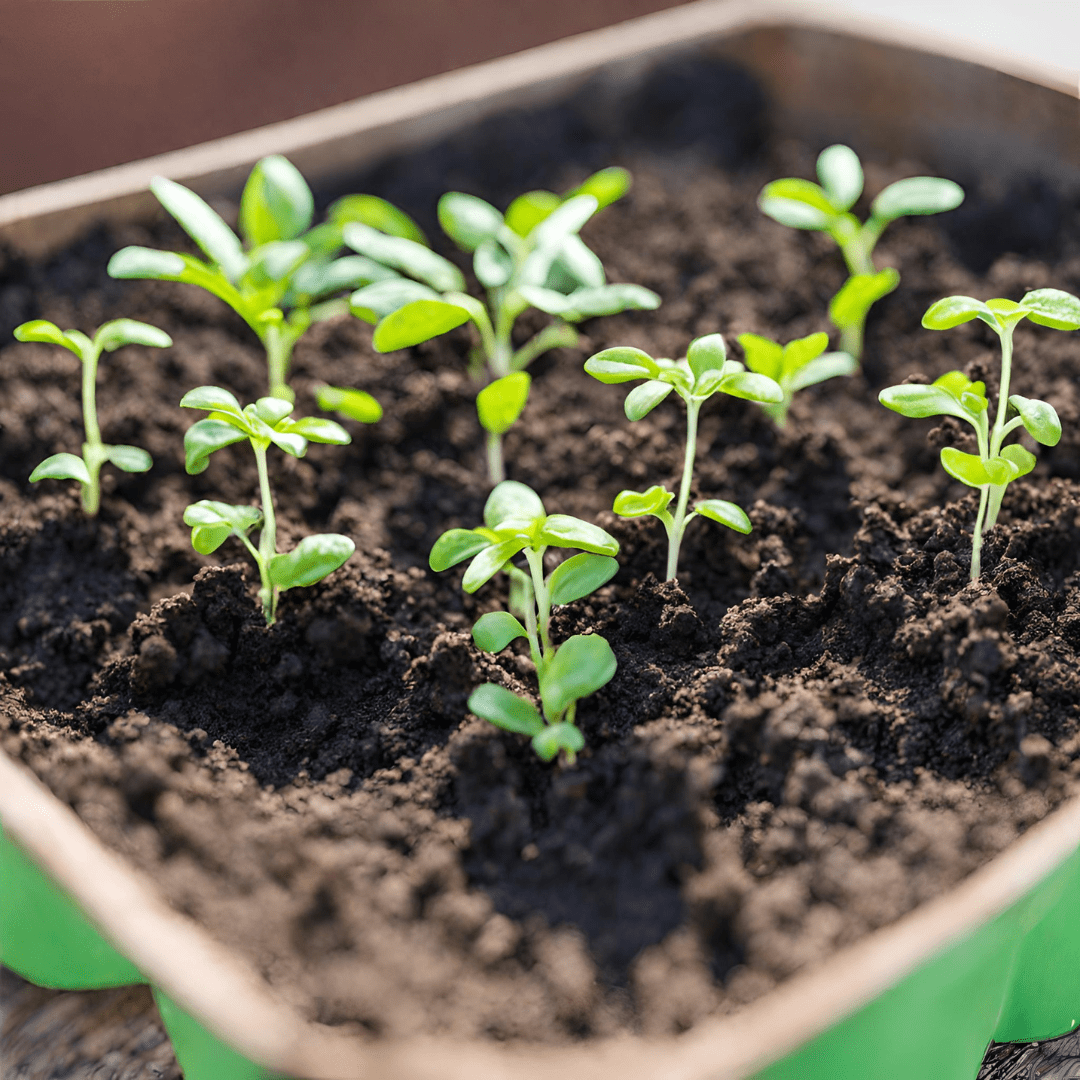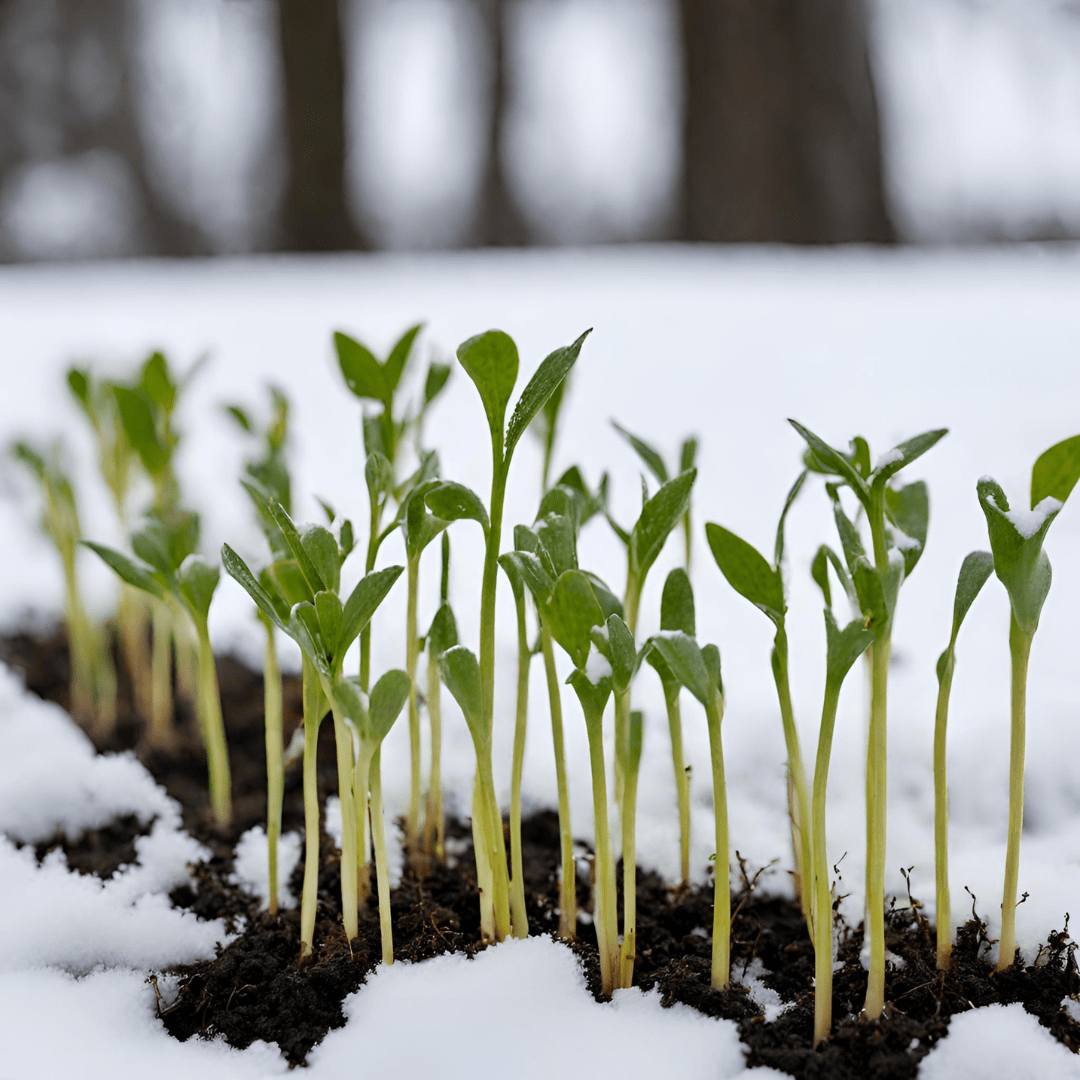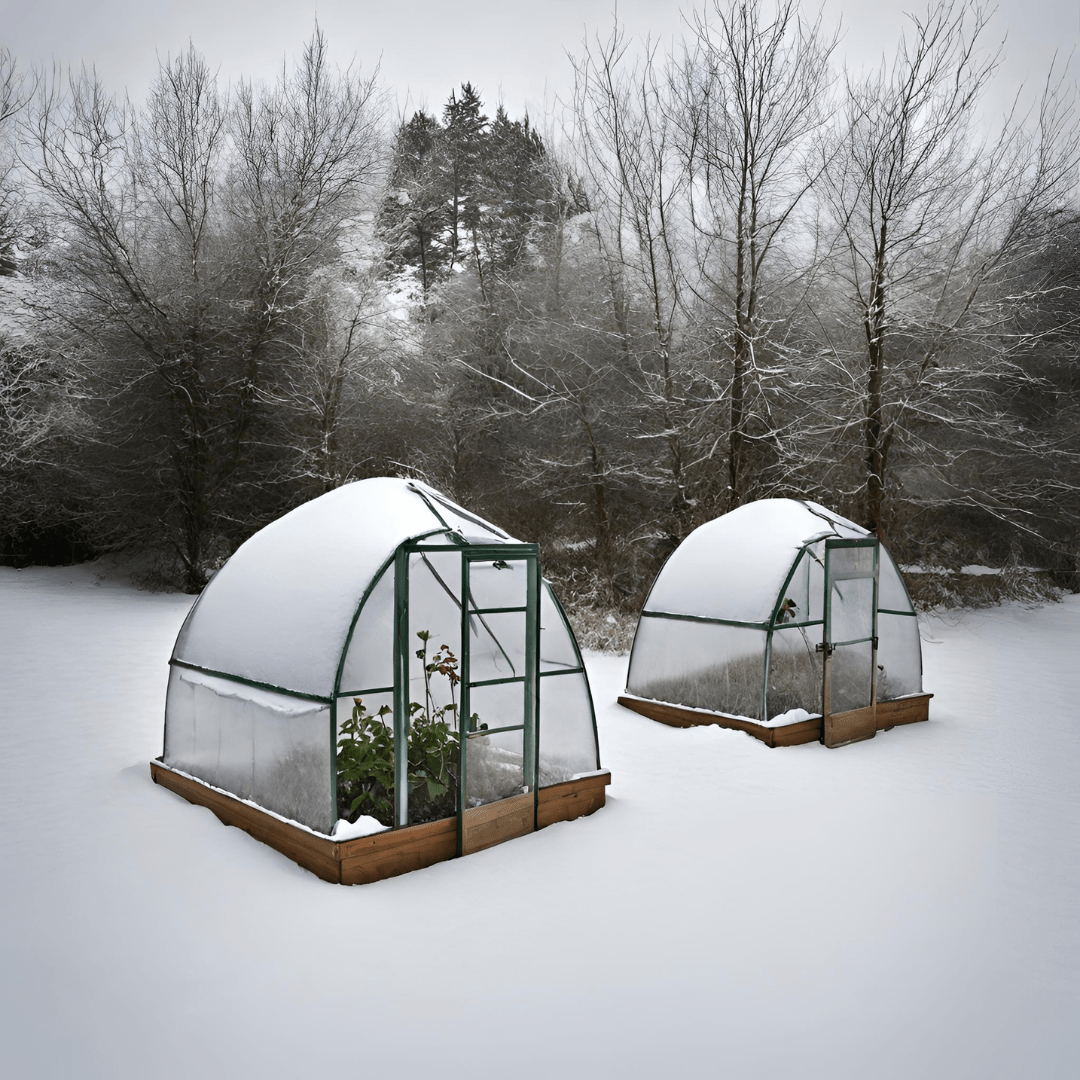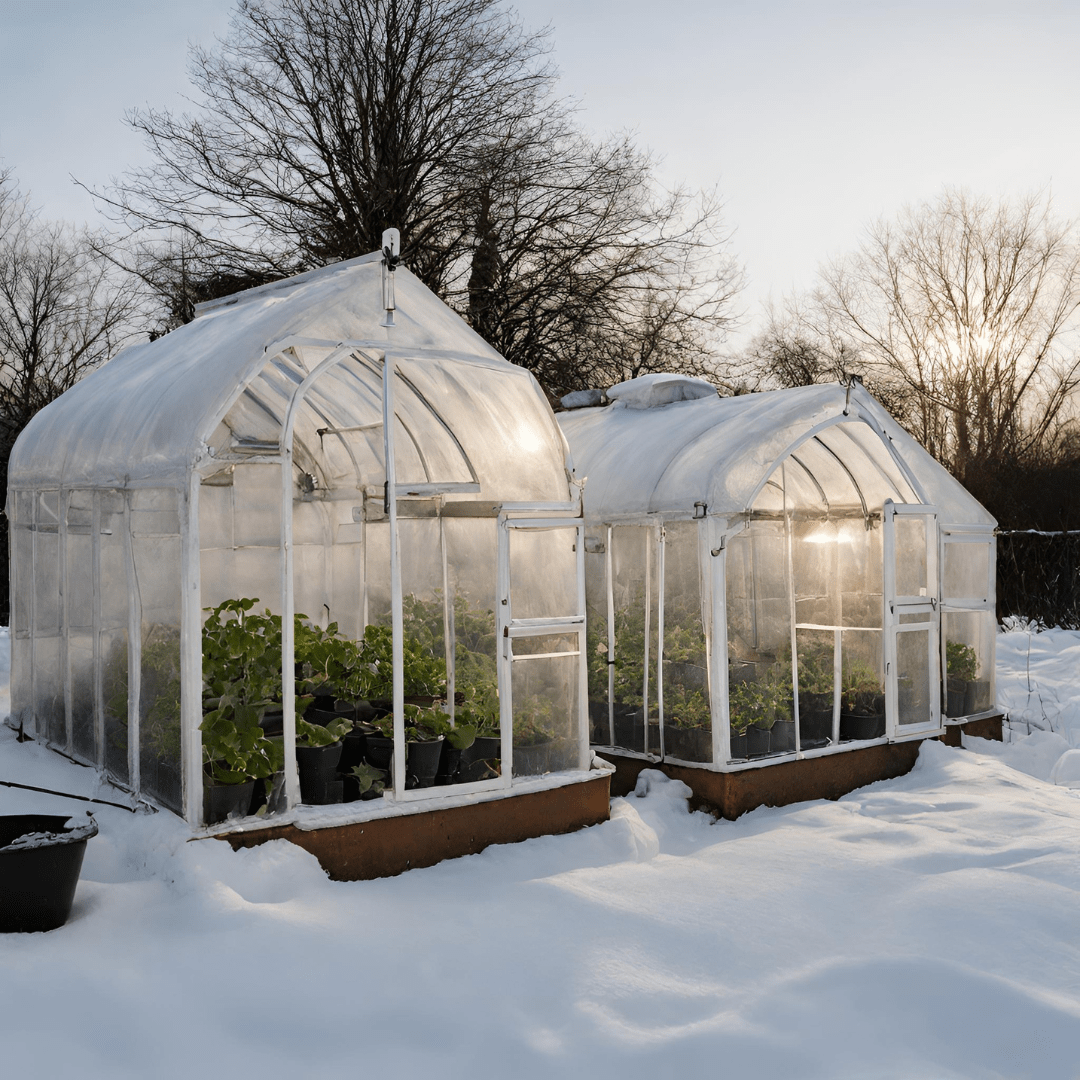Best soil for winter sowing.
What Is Included in This Post:
- Introduction to Winter Sowing and Soil Requirements
- Understanding the Importance of Soil Composition for Winter Sowing
- Analyzing Different Soil Types and Their Suitability for Winter Sowing
- Exploring Organic and Synthetic Soil Amendments for Winter Sowing
- Best Practices for Preparing and Conditioning Soil for Winter Sowing
- Step-by-Step Guide to Testing and Evaluating Soil Quality for Winter Sowing
- Tips for Choosing the Right Soil Mix for Specific Winter Sowing Needs
- Budget-Friendly Alternatives for Soil Mixes in Winter Sowing
- Conclusion
- Winter Sowing Soil Amendments (for Containers)
- Frequently Asked Questions
Winter sowing is a gardening technique that allows you to start your plants outdoors during the colder months, giving them a head start for the upcoming growing season. While selecting the right seeds and containers is crucial for successful winter sowing, the role of soil cannot be underestimated. The soil composition and quality play a vital role in providing essential nutrients, moisture, and a conducive environment for seed germination and plant growth. In this comprehensive guide, I will explore the importance of soil in winter sowing and delve into the various soil types, amendments, and best practices to help you choose the best soil for winter sowing. Whether you are a beginner or an experienced gardener, this article will equip you with the knowledge and insights to make informed decisions about soil selection for successful winter sowing endeavors.
This is a pinnable post. Tap or hover over any image in this post to pin to your Pinterest Boards.

Introduction to Winter Sowing and Soil Requirements
What is Winter Sowing?
Winter sowing is a fantastic gardening technique that allows you to start seeds outdoors during the winter months. Instead of relying on artificial methods like grow lights and heat mats, you utilize the natural elements to germinate and grow your plants.
The Role of Soil in Winter Sowing
Now, let’s talk about soil. Soil plays a crucial role in the success of your planting endeavors. It’s like the cozy bed your seeds snuggle into, providing them with essential nutrients, moisture, and a stable environment to sprout and thrive. But not all soil is created equal! So, buckle up, and let’s dive into the world of soil composition.
Understanding the Importance of Soil Composition for Winter Sowing
The Impact of Soil Composition on Plant Growth
Soil composition is no joke when it comes to plant growth. Different soil types have varying textures, drainage capacities, and nutrient contents. These factors directly influence the development and health of your plants. So, choosing the right soil composition is very important for your seeds to sprout.
Key Soil Properties for Successful Winter Sowing
Let’s get down to the nitty-gritty, shall we? There are a few key soil properties you need to keep in mind for successful planting. Firstly, drainage is crucial to prevent waterlogging, which can drown your precious seeds. Secondly, aeration is essential for root development and nutrient absorption. Finally, nutrient content is like a scrumptious meal for your growing plants, ensuring they have all the essential vitamins and minerals they need to thrive.
Analyzing Different Soil Types and Their Suitability for Winter Sowing
Sandy Soil
It’s the lightweight, easy-breezy soil that drains perfectly for seedlings. While it offers great aeration, it can be a bit of a nutrient desert. But worry not! With some amendments, it can transform into a fertile paradise for your winter-sown seeds.
Clay Soil
Clay soil, on the other hand, is dense and holds moisture like a sponge. But beware, it can also become compacted, leading to poor drainage and, well, sad plants. With a few tweaks, clay dirt can become a superstar in your winter sowing lineup, but only for in-ground sowing and definitely NOT container-sown seeds!
Loamy Soil
The goldilocks of soil types – loamy soil! It’s like winning the gardening lottery. It has the perfect balance of sand, silt, and clay, offering excellent drainage, moisture retention, and nutrient-holding capacity. If you’ve got loamy soil, consider yourself lucky because this is the perfect soil type for your in-ground winter-sown seeds.
Evaluating Soil Types for Winter Sowing
When it comes to choosing the right soil for winter sowing, it’s all about balance and adjustments. Whether you have sandy, clay, or loamy soil, you can tweak it to create the ideal growing medium for your winter-sown seedlings. Remember, this soil type is only for in-ground winter sown seeds.
Exploring Organic and Synthetic Soil Amendments for Winter Sowing
Organic Soil Amendments
Now, let’s talk about soil amendments – the secret weapons in your winter sowing arsenal. Organic amendments, like compost, manure, and leaf mold, are like a nutritious feast for your soil. They improve its structure, provide essential nutrients, and promote microbial activity.
Synthetic Soil Amendments
If organic amendments aren’t your cup of tea, fear not! Synthetic amendments, such as perlite, vermiculite, and peat moss, can also work their magic. They enhance drainage, aeration, and moisture retention, like the superheroes of the soil world. So, if you prefer a touch of science in your gardening game, synthetic amendments have your back!
Choosing the Right Soil Amendments for Winter Sowing
When it comes to choosing the right soil amendments for winter sowing, it’s all about finding the perfect match for your soil type and plant preferences. Experiment, mix and match, and have fun with it! Your plants will thank you with healthy, happy growth, and you’ll feel like a master alchemist tending to your soil laboratory.
Best Practices for Preparing and Conditioning Soil for Winter Sowing
Soil Preparation Techniques
Before diving into the exciting world of winter sowing, it’s crucial to prepare and condition your soil properly. Start by clearing away any debris or weeds from the sowing area. This will help create a clean and healthy environment for your seeds to thrive. Next, loosen the soil using a garden fork or tiller, allowing for better root penetration and water absorption. Don’t be afraid to get your hands dirty – it’s all part of the gardening charm!
Enhancing Soil Structure and Drainage
A well-structured soil is key to successful winter sowing. Consider adding organic matter, such as compost or well-rotted manure, to improve soil structure and provide essential nutrients for your plants. Additionally, if you’re dealing with heavy clay soil, adding sand or perlite can help improve drainage and prevent waterlogging. Remember, even your plants need some breathing room!
Adjusting pH Levels for Optimal Winter Sowing
Just like humans, plants have their preferences when it comes to soil acidity. Some plants thrive in acidic soil, while others prefer a more alkaline environment. Use a pH testing kit to determine the pH level of your soil and make any necessary adjustments. For acidic-loving plants, incorporating peat moss or pine needles can help lower the pH. On the other hand, adding lime or wood ash can raise the pH for plants that prefer alkaline soil. Finding the right balance will ensure your winter sowing endeavors bear fruit (or flowers!).
Step-by-Step Guide to Testing and Evaluating Soil Quality for Winter Sowing
Soil Testing Methods
To truly understand your soil’s needs and ensure successful winter sowing, conducting soil tests is a must. There are various methods available, from DIY kits to professional laboratory analyses. DIY test kits typically involve collecting soil samples, following the instructions provided, and analyzing the results. For a more in-depth analysis, you can send your samples to a reputable soil testing lab. Whichever method you choose, testing your soil will provide valuable insights into its nutrient content and composition.
I have written in-depth DIY garden soil tests you can perform on your own with just simple ingredients and tools you may already have on hand.
4 Easy DIY Garden Soil Tests to Do Now
Interpreting Soil Test Results
Once you receive your soil test results, it’s time to put your detective hat on and decode the mysteries of soil composition. Pay close attention to the levels of essential nutrients such as nitrogen, phosphorus, and potassium. These macronutrients are vital for plant growth and development. Additionally, look for any imbalances or deficiencies in micronutrients like iron, zinc, or magnesium. Understanding your soil’s nutrient profile will guide you in making the necessary amendments for optimal winter sowing success.
Addressing Soil Deficiencies for Winter Sowing
After identifying any soil deficiencies or imbalances, it’s time to take action! Depending on the specific needs of your soil, you may need to amend it with organic matter, fertilizers, or micronutrient supplements. Organic matter, such as compost, can enhance nutrient availability and improve soil structure. Fertilizers can provide a quick boost of specific nutrients, while micronutrient supplements can target specific deficiencies. Remember, a little TLC for your soil can go a long way in ensuring healthy and vibrant winter-sown plants.
Tips for Choosing the Right Soil Mix for Specific Winter Sowing Needs
Customizing Soil Mixes for Different Plant Types
Just as we all have different preferences when it comes to food, plants have their own unique taste in the soil! Different plant types require specific soil conditions to thrive. Research the soil preferences of the plants you plan to winter sow and customize your soil mix accordingly. Some plants prefer well-draining sandy soils, while others thrive in nutrient-rich loamy soils. By tailoring your soil mix to each plant’s preferences, you’ll give them the VIP treatment they deserve.
Creating Well-Draining Soil Mixes for Winter Sowing
Nobody likes to have wet feet all the time, including your plants! Adequate drainage is essential for preventing root rot and other moisture-related issues. To create a well-draining soil mix, incorporate materials like sand, perlite, or vermiculite into your base soil. These additions will improve drainage and prevent water from pooling around your plant’s roots. Remember, your plants will appreciate a little breathing room down below!
Avoiding Common Mistakes When Selecting Soil for Winter Sowing
Choosing the right soil mix is crucial for winter sowing success, but it’s easy to stumble into common pitfalls. Avoid using heavy clay soils that can become compacted and hinder root growth. Also, steer clear of overly acidic or alkaline soils that can throw off your plant’s nutrient uptake. Lastly, don’t forget about the importance of soil sterilization to prevent the growth of unwanted weeds and pathogens. By sidestepping these common mistakes, you’ll set the stage for a blooming winter garden.
Budget-Friendly Alternatives for Soil Mixes in Winter Sowing
Homemade Soil Mix Recipes
Who says you need to break the bank for a top-notch soil mix? With a little creativity and resourcefulness, you can whip up your own budget-friendly soil mix right at home. Combine ingredients like garden soil, compost, perlite, and coconut coir in various ratios to create a customized mix that meets your winter sowing needs. Experiment, have fun, and remember that gardening should never strain your wallet!
Using Compost and Amendments as Soil Substitutes
If you’re looking to cut costs even further, consider using compost and other organic amendments as substitutes for traditional soil. Compost is a nutrient-rich powerhouse that can nurture your winter-sown plants without the need for extensive soil mixes. By incorporating compost and amendments like worm castings, you can provide your plants with the organic goodness they crave, all while saving a few bucks in the process.
Finding Affordable Soil Mix Options
If you prefer the convenience of pre-made soil mixes, fear not! There are affordable options available that won’t break the bank. Look for generic or store-brand mixes that offer similar quality to name brands, but at a lower price point. Additionally, consider purchasing in bulk or during sales to save even more. Gardening on a budget doesn’t mean sacrificing quality – it’s all about finding the right deals and bargains.
Conclusion
In conclusion, selecting the right soil for winter sowing is a critical component of a successful gardening experience. By understanding the importance of soil composition, analyzing different soil types, exploring organic and synthetic amendments, and following best practices for soil preparation and conditioning, you can optimize the conditions for your winter-sown plants to thrive. Remember to regularly test and evaluate your soil quality, and adjust as needed to address any deficiencies. With the knowledge gained from this ultimate guide, you are now equipped to confidently choose the best soil for winter sowing, setting the stage for a bountiful and rewarding gardening season ahead.
Winter Sowing Soil Amendments
Perfect for winter sowing containers!






Frequently Asked Questions
1. Can I use regular garden soil for winter sowing?
Yes, you can use regular garden soil for winter sowing. However, it is essential to ensure that the soil is well-draining and not compacted. Additionally, adding organic matter or soil amendments can improve its structure and fertility, providing optimal conditions for winter-sown plants. However, you must never use regular garden soil in containers for your winter-sown seeds. It will be too compacted for seed germination in containers.
2. How often should I test my soil for winter sowing?
It is recommended to test your soil at least once a year, preferably in the fall before winter sowing. Regular soil testing helps determine the nutrient levels, pH, and overall quality of the soil. Based on the results, you can make informed decisions about the necessary amendments or adjustments needed for successful winter sowing.
3. Can I reuse soil from previous winter sowing for the next season?
Yes, you can reuse soil from previous winter sowing for the next season. However, it is important to replenish the soil with amendments or nutrients as it may have depleted over time. Add compost, organic matter, or specific fertilizers to rejuvenate the soil’s fertility and ensure healthy growth for your winter-sown plants. However, never reuse potting soil in containers.
4. Are there any specific soil mix recipes for winter sowing?
While there are no specific soil mix recipes for winter sowing that apply universally, you can customize soil mixes based on the requirements of the plants you intend to sow. A general recommendation is to use a well-draining mix containing a combination of compost, perlite, vermiculite, and peat moss. Adjusting the ratios based on the specific needs of the plant species will help create an optimal soil mix for successful winter sowing.
Summary
I hope I have inspired you to try your skills at winter sowing with these tips and products.
If you were encouraged by this post, I invite you to check out my FREE Printables Page for fun free printables, planners, and charts.
ENTER MY FREE Printables Page HERE
Here are some more of my winter gardening inspiration posts to check out!
Planning Your Garden: How to Plan a Vegetable Garden: Expert Green Thumb Tips!
Winterizing the Garden: How to Winterize Your Vegetable Garden: Step-by-Step Checklist
Mulching the Garden: How to Make Leaf Litter Mulch
How to Grow a Fall Garden: 9 Best Fall Crops
Blessings,
The Off Grid Barefoot Girl





